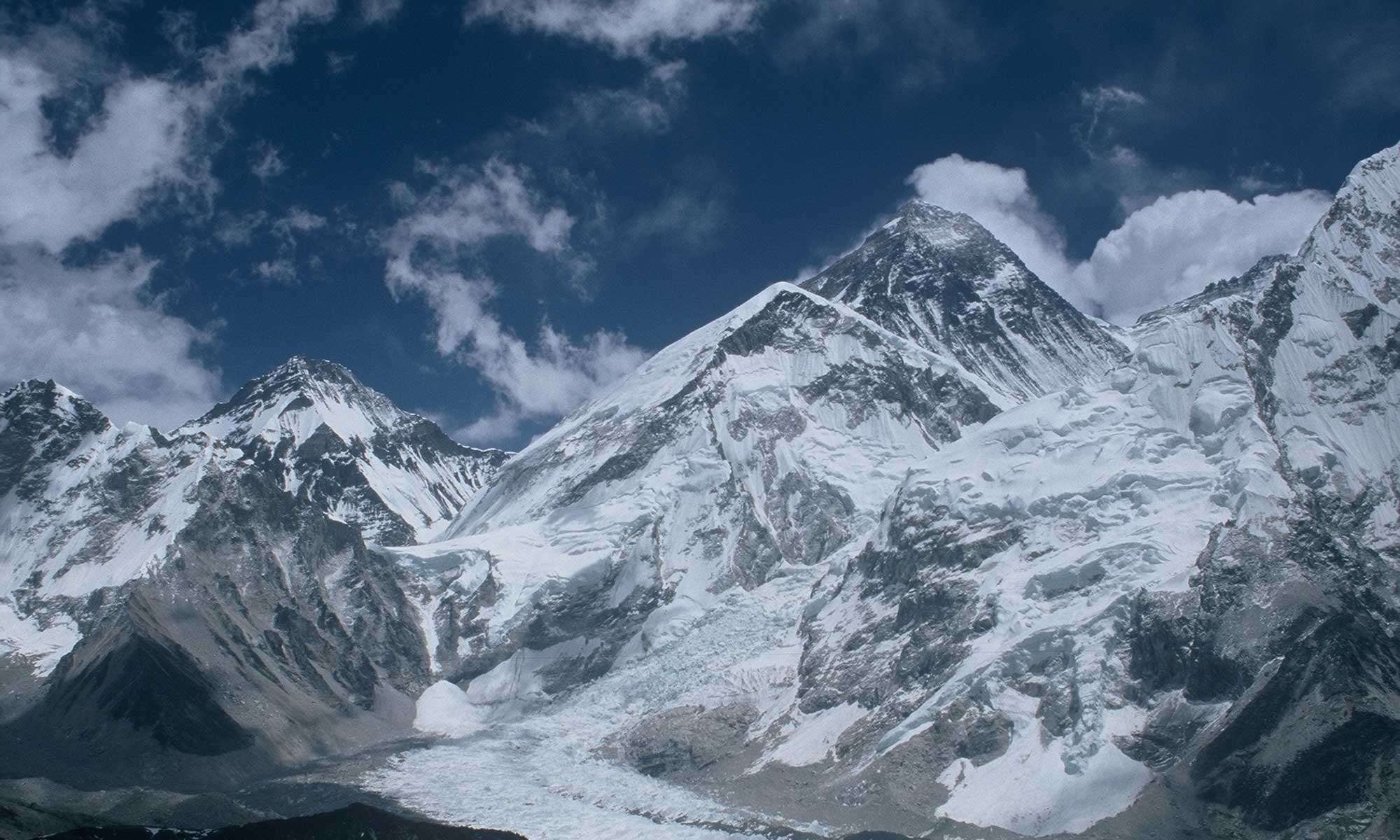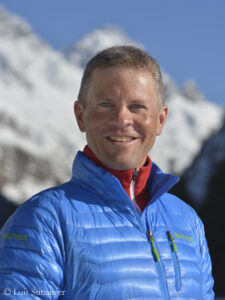Luis Stitzinger, one of the most successful German high-altitude mountaineers, has been missing since Thursday evening local time in the upper area of the eight-thousander Kangchenjunga in eastern Nepal. According to information from his wife, mountaineer Alix von Melle, Luis reached the summit of the third highest mountain on earth at around 5 p.m. – as the last climber of a group standing on the highest point at 8,586 meters that day.
The 54-year-old climbed without bottled oxygen and had his skis with him because he planned to ski down Kangchenjunga if possible. At around 9 p.m., Stitzinger was once again in contact with the base camp team of the Nepalese expedition operator Seven Summit Treks (SST), Alix said.
Search team so far unable to land
At that time – it was already dark – he was said to be at an altitude of about 8,300 meters. Allegedly, Luis announced that he wanted to ski down from there to the highest camp. He had previously arranged with the climber Flower Waganku Wayta Hirkawarmi, who had been up before him, to meet again at Camp 4.
There, at about 7,600 meters, however, he did not arrive. The Peruvian, who lives in Germany, sounded the alarm the next morning. Today, a four-member Sherpa rescue team was expected at base camp. Because of the fog in the valley, the helicopter could not land at the base camp until now (4 p.m. CEST). The plan is to fly the Sherpas directly on to Camp 2 at around 6,400 meters from where they are to ascend as quickly as possible – with bottled oxygen – to search for Luis.
First summit attempt failed
Stitzinger had come to Kangchenjunga not as a mountain guide, but as a private citizen – in contrast to, for instance, the previous spring seasons of 2021 and 2022, when Luis had guided clients on Mount Everest for the Austrian expedition operator Furtenbach Adventures. He was climbing on a SST group permit.
On 18 May, Luis had made a first summit attempt, but had been part of the group that had entered a wrong couloir in the upper part of the mountain and therefore missed the highest point. Only the team around the Norwegian Kristin Harila had reached the summit that day. According to Alix, Luis returned to base camp the same evening of the failed attempt – skiing much of the way down from Camp 4. He reported to his wife that the snow conditions between about 8,000 meters and base camp were no problem for a ski descent.
Battery of the GPS device empty?
When another good weather window loomed for last Wednesday and Thursday, Luis decided to do another summit attempt after only three days of rest at base camp – despite the exertions of the first ascent. “He felt absolutely fit and said he was doing better than on many other expeditions,” Alix told me.
On Monday, Luis ascended to Camp 2, on Tuesday to Camp 3, and on Wednesday to Camp 4, the last high camp. From there, he sent a message to his wife via Garmin InReach that “everything was fine” and that he would be leaving for the summit at 6 pm. It was the last message Alix received via his satellite device. It was agreed that he would contact her again after returning from the summit to the last high camp. This did not happen, indicating that possibly his battery was dead. Apparently, the function that could have tracked his position live was also switched off. This now makes the search for him more difficult.
On ten eight-thousanders, nine of them without breathing mask
For Luis Stitzinger, Kangchenjunga was number ten in his eight-thousander collection. Previously, he had scaled Cho Oyu (in 2000), Gasherbrum II (in 2006), Nanga Parbat (in 2008), Dhaulagiri (in 2009), Broad Peak (in 2011), Shishapangma (in 2013), Manaslu (in 2017) and Gasherbrum I (in 2018): all without bottled oxygen, six eight-thousanders together with his wife Alix. Only on his two summit successes on Mount Everest (in 2019 via the Tibetan north side and in 2022 via the Nepalese south side) had Luis used breathing masks because he had guided clients. He almost always had his skis in his luggage. So he once described to me the 2008 ski descent of Nanga Parbat over the central Diamir flank as one of the highlights of his career.
Luis is extremely experienced and anything but a hasardeur on the mountain. I was able to experience that myself in 2014. During our first ascent of the 7,129-meter-high Kokodak Dome in western China, he proved to be not only a prudent expedition leader and mountain guide, but also a true condition miracle. This gives me hope.
P.S. I urge everyone not to speculate about Luis’ fate, nor to badger his wife Alix. We will continue to provide you with the facts.
Update 29 May: The helicopter with the search team landed at Kangchenjunga base camp in the morning Nepalese time.





